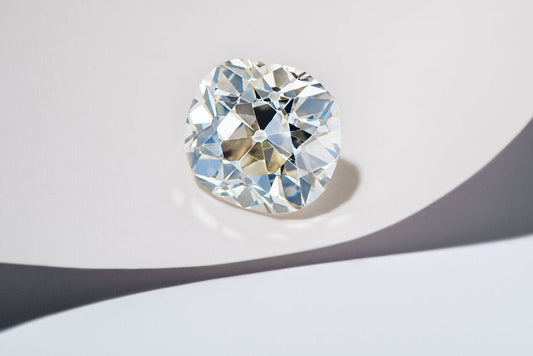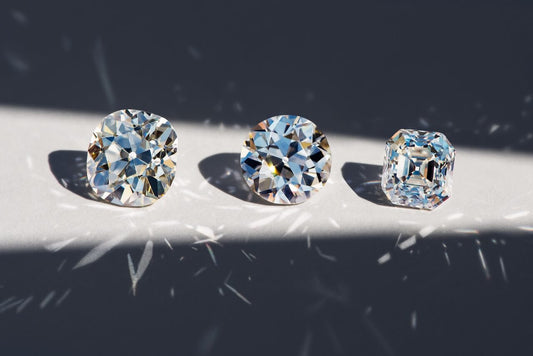When shopping for a fancy cut diamond, you might think you're getting the best value for your money. But here's a startling revelation: most diamond manufacturers aren't cutting these gems to their ideal proportions. Why? It's all about maximizing carat weight and profits. Let's dive into the world of diamond cutting and uncover the secrets to finding a truly exceptional fancy cut diamond that offers both beauty and value.
WHAT'S REALLY HAPPENING IN THE DIAMOND INDUSTRY?
Traditionally, the Gemological Institute of America (GIA) didn't provide cut grades for fancy cut diamonds. This absence of standardized cut quality assessment led to a market where:
- Consumers primarily compared diamonds based on price and GIA paper grades
- Manufacturers found a lucrative loophole by leaving extra weight on diamonds
- The focus shifted to price wars and carat weight manipulation instead of cut quality
THE CARAT WEIGHT MYTH
Have you ever wondered why almost all diamonds are 1.00ct or 1.01ct? Here's the truth:
- Manufacturers often leave extra weight to reach the coveted 1-carat mark
- A perfectly cut 0.90 carat Oval diamond might be inflated to 1ct
- Consumers pay for extra carat weight without an actual increase in diamond size
- The extra weight can negatively affect the beauty of the diamond's cut
WHY CUT MATTERS
With diamonds, CUT is the single most important factor for determining beauty and optical characteristics. A well-cut diamond will:
- Maximize brilliance and fire
- Enhance overall appearance
- Provide better value for money
THE CUSHLA WHITING APPROACH: CUT ANALYSIS At CUSHLA WHITING
We perform a comprehensive 'CUT ANALYSIS' on every diamond we buy. This involves:
- Advanced cut software
- Light return maps (ASET and Idealscope)
- Recut potential assessment
UNDERSTANDING LIGHT RETURN MAPS
ASET and Idealscope are visual representations of a diamond's brightness.
They help us:
- Measure overall brightness and contrast patterns
- Identify negative contrast patterns like bow tie or fish eye effects
- Assess the diamond's brilliance
RECUT POTENTIAL: UNLOCKING HIDDEN BEAUTY
Recut potential measures how far a diamond has been cut from its ideal form. Here's what you need to know:
- Each diamond cut has its ideal proportions for maximum brilliance
- Diamonds are rarely cut to ideal proportions due to yield considerations
- Buying a diamond with the lowest difference between ideal and actual weight ensures maximum value and beauty
THE OPTIMIZATION PROCESS
In some cases, diamonds can be 'optimized' through recutting. This process:
- Maximizes brightness and improves cut quality
- Often results in superior performance without losing millimeter size
- May significantly improve brilliance and optical patterns in certain diamonds (e.g., champagne diamonds)
CUSHLA WHITING'S CUTTING-EDGE TECHNOLOGY
Our advanced software helps us:
- Generate photorealistic images under various lighting conditions
- Produce Ideal Scope and ASET light reports to measure optical brilliance
- Measure optimization potential
- Design new cut designs while maximizing optical performance
WHY WE LOVE IT
At CUSHLA WHITING, we're passionate about helping our clients find the most beautiful and valuable diamonds. Our cut analysis process ensures that you're getting a diamond that's not just big on paper, but truly exceptional in appearance and value.
Ready to explore our meticulously curated collection of fancy cut diamonds? Book an appointment with one of our CUSHLA WHITING Design and Gemstone Consultants today.


